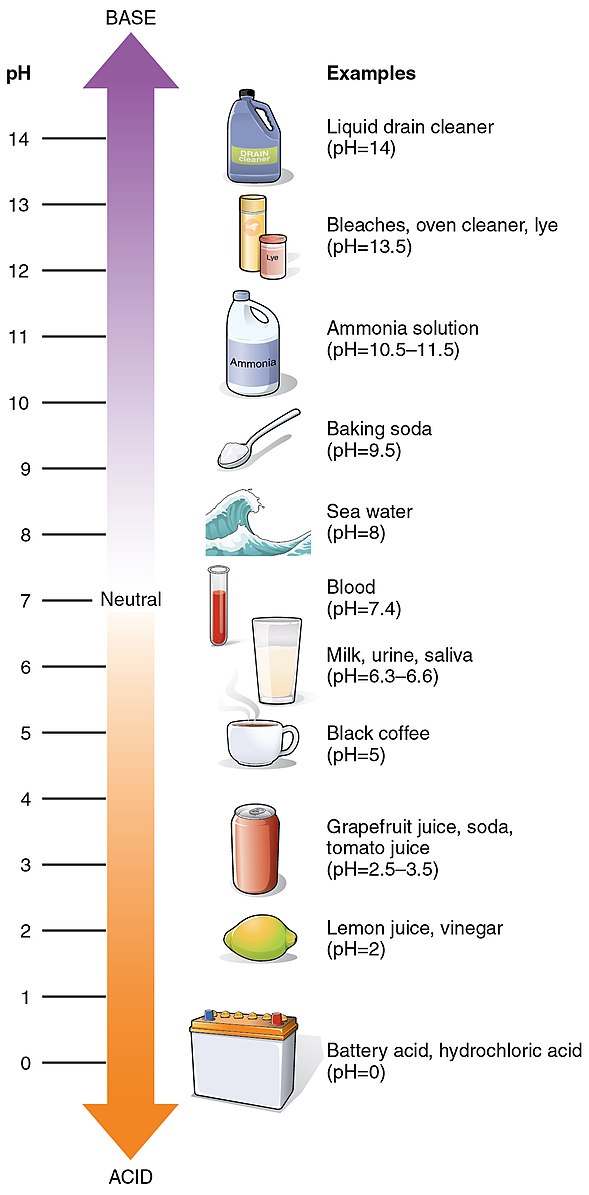The pH value of brine water is a critical factor in various applications, particularly in the realm of food preservation and canning. This parameter can significantly impact the safety, quality, and longevity of preserved foods, making it a crucial consideration for both commercial and home-based food processing.
The Importance of pH in Canned Food Testing
For canned acid foods, the equilibrium pH value must be 4.6 or below to inhibit the growth of Clostridium botulinum, the most heat-resistant food pathogen microorganism. This pH value ensures the safety and longevity of canned acid foods, such as fruits, tomatoes, and pickled vegetables.
The Role of pH in Fish Preservation
 Image source: OpenStax College
Image source: OpenStax College
In fish preservation, the pH value of brine water can have a profound impact on the quality of the preserved fish. Studies have shown that brining fish in a pH 6.5 brine can result in the release of actin and myosin heavy chains, while an initial pH of 8.5 does not favor the release of these proteins. This effect suggests that lower pH brines can enhance the solubilization of myofibrillar proteins, which can improve the texture and quality of the preserved fish.
Contaminants and Chemicals in Brine Water
Brine water can contain various contaminants and chemicals, depending on the source and processing methods. For instance, brine water used in canning may contain acids such as citric, lactic, and malic acids, or glucono-delta-lactone to lower the pH to 4.6. On the other hand, brine water used in fish preservation may contain sodium chloride, potassium chloride, calcium chloride, and magnesium chloride.
Managing Contaminants and Chemicals in Brine Water
To deal with contaminants and chemicals in brine water, it is essential to use high-quality ingredients and follow proper processing methods. For canned foods, using brines with known acid concentrations or tablets of known acid compositions can help ensure the correct pH value. For fish preservation, using the right combination of salts and adjusting the pH value can enhance the solubilization of myofibrillar proteins and improve the quality of the preserved fish.
Natural Alternatives for Balancing pH Value
For home canners or those looking for natural alternatives, using lemon juice or vinegar can help lower the pH value of brine water. Lemon juice has a pH value of around 2-2.5, while vinegar has a pH value of around 2.5-3. Adding these natural acids to brine water can help inhibit the growth of harmful bacteria and ensure food safety.
Conclusion
The pH value of brine water is a crucial factor in various applications, including food preservation and canning. Maintaining the correct pH value can ensure food safety, improve the quality of preserved foods, and prevent the growth of harmful bacteria. By using high-quality ingredients, following proper processing methods, and considering natural alternatives, individuals can effectively manage the pH value of brine water and ensure the safety and quality of their preserved foods.
References
- The effect of brine composition and pH on the yield and nature of water-soluble proteins from fish muscle. https://www.sciencedirect.com/science/article/pii/S0308814604005588
- pH of Brine for Canned Food Testing – HORIBA. https://www.horiba.com/int/water-quality/applications/food-beverage/ph-of-brine-for-canned-food-testing/
- pH of Brine For Canned Food Testing – VWR. https://at.vwr.com/assetsvc/asset/de_AT/id/15263856/contents
